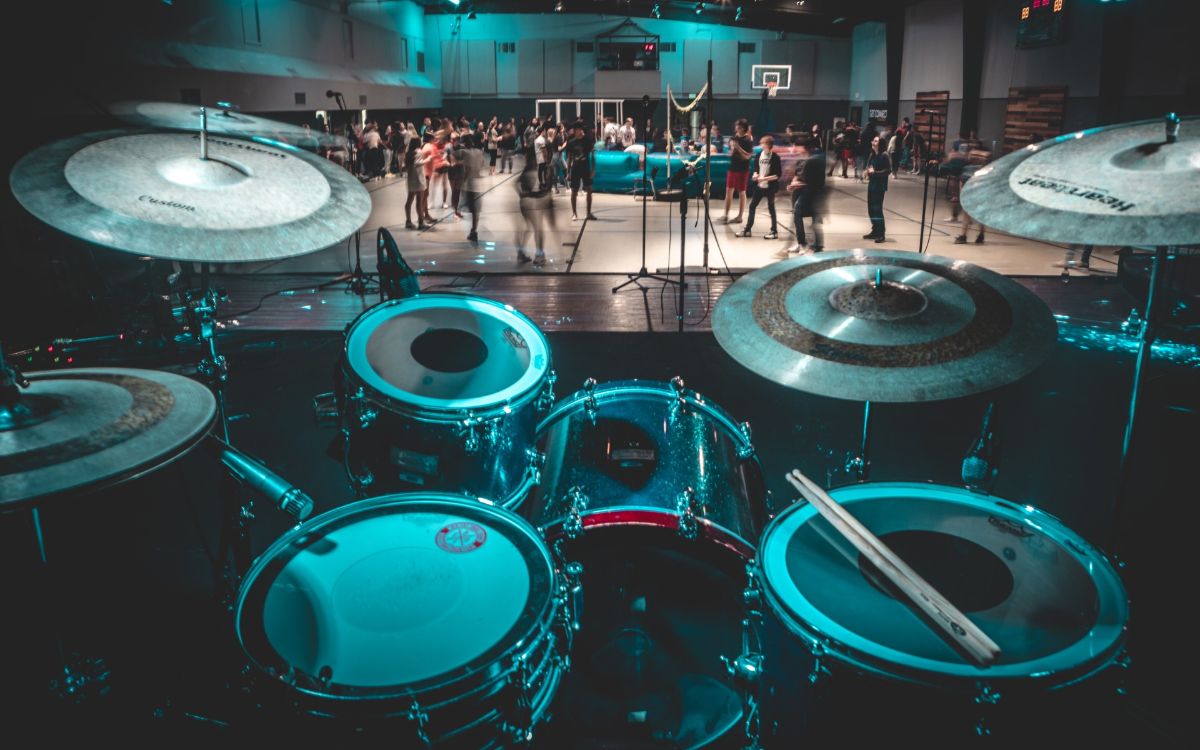Setting up your cymbals can be fairly daunting if it’s something that is new to you. While drums are fairly straightforward to set up, cymbals have more room for decision-making.
The problem is that your placement of cymbals may be detrimental to your playing if you don’t position them properly.
Here’s a comprehensive guide on how to place your cymbals around the kit. We’re going to look through all the possible options so that you know exactly what to do. Let’s jump in.
Contents
How to Set Up Cymbals and Place Them Correctly
Before you position the cymbals, you’re going to need to make sure that you have enough cymbal stands to mount them. Most cymbal stands work the same way. The only unique one would be the stand for the hi-hats.
So, get your hi-hat stand along with the other stands ready so that you can place them around the kit. Before setting up, just ensure that each stand has washers along with some felts to protect the cymbals.
Ensure to place a nylon washer over the thread of the cymbal stand, as well as cymbal felts on either side of the cymbal. This will prevent any metal-to-metal contact and will save your cymbal from damage such as keyhole cracks around the bell.
Setting up Hi-Hats
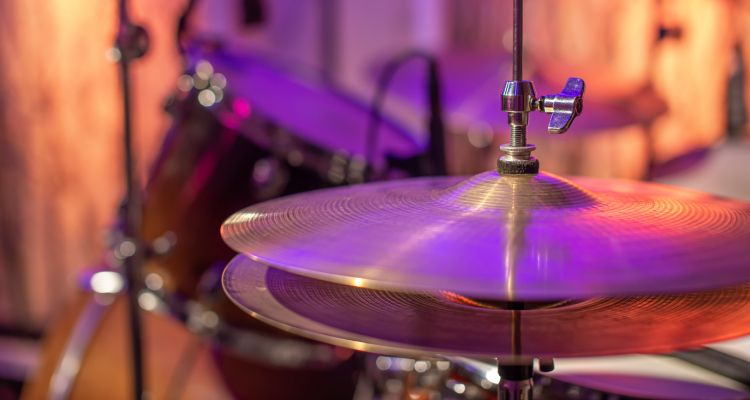
The hi-hats are the most important part of a cymbal setup for drums. They’re the cymbals you’re going to play the most. So, they need to be the closest cymbal to you and comfortable to play.
Typically, a hi-hat stand should be placed on the left of the snare drum. This will allow your left foot to rest on the pedal. It would be the opposite way round if you were playing on a left-handed setup.
When the stand is in the right place, you’ll slide the bottom hi-hat cymbal into the seat (which is the heavier cymbal of the two), and then attach the top hi-hat to the clutch, which is then fixed to the rod of the hi-hat stand.
A key point in setting up your hi-hats is establishing the optimal distance between the hats and the snare drum. If the distance is too long, you’re going to be holding your right arm too far to your left when playing. If the distance is too short, the hi-hats will be blocking the snare drum. So, you’ll want to find the sweet spot.
Another thing to remember is that you can adjust the height of the upper tube of the hi-hat stand in order to find a more comfortable playing position for your hi-hats.
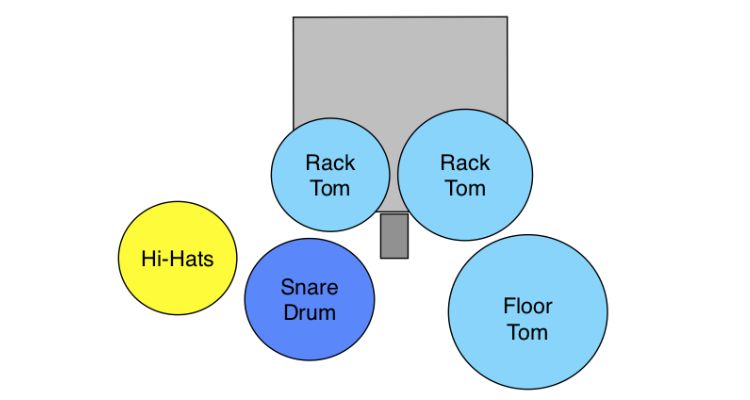
Setting up a Ride Cymbal
After placing the hi-hats, you should move on to the ride cymbal. It’s arguably the second most important cymbal in your drum setup as it gets played almost as often as hi-hats. Ride cymbals are typically quite large, ranging from 20” to 24”.
You need to find a good spot that has enough space to position the ride without getting in the way of any of your other drums. Since you play the ride with the same hand that you play the hi-hat with, most drummers place their ride cymbal to the right side of their drum kit.
One of the best spots to place it is in between the middle tom and the floor tom. Having it there will feel natural to play on. If you place it too far to your right, you’ll end up overextending your arm in an uncomfortable way.
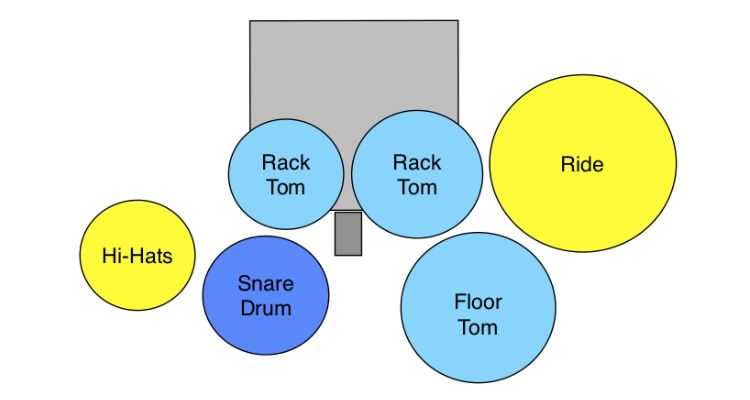
Positioning Crash Cymbals
Moving onto crash cymbals, most drummers play with a few of them. However, the most common position to place a crash cymbal is above your hi-hats, and to the left of the high tom. If you’re only using one crash cymbal in your setup, that’s the best place to place it.
Having your hi-hats, crash, and ride placed like this is the most standard cymbal setup that most drummers use. If you have more than one crash, you could place the second one next to the ride cymbal.
Some drummers like to place the second crash to the left of the ride while others like to place it to the right. It’s worth experimenting to see which position you like the most.
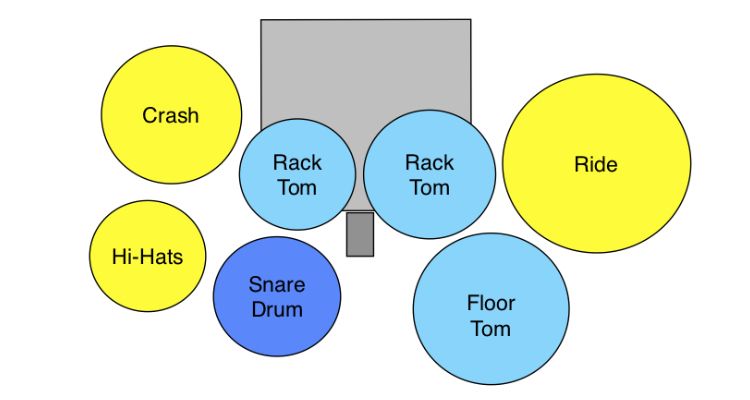
Setting up a Splash Cymbal
Splash cymbals are much easier to place around the kit as they’re the smallest cymbals for your drum set. Since they’re so small, you can place them almost anywhere.
If you only have one splash cymbal, you should place it in a position that is easy to reach and that will add a unique dynamic to your cymbal playing.
One common splash cymbal placement is to put it between the two rack toms. Having it there will allow you to easily play it in between drum fills. It will also allow for some diverse interplay between the splash and the hi-hats.
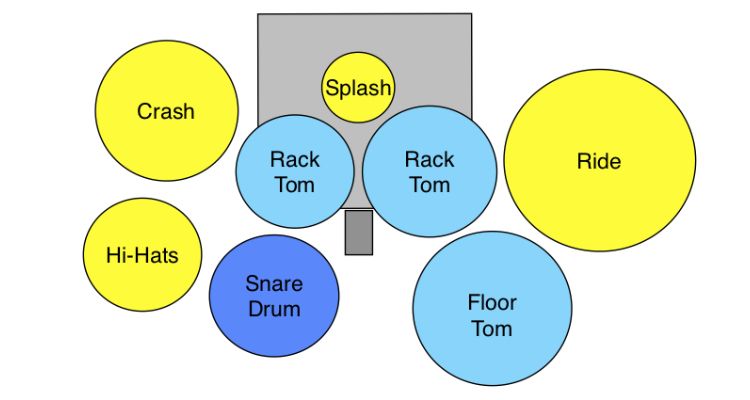
Another common position to put it is to the left of the hi-hats. You’ll see many fusion drummers doing this as it also allows for interplay between the hi-hats.
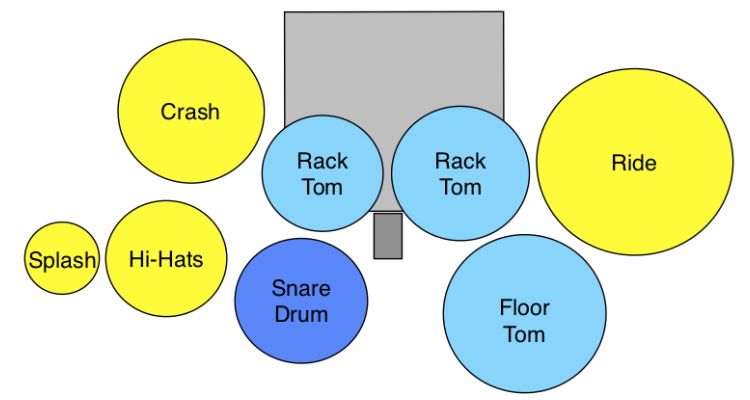
Setting up a China
Having a china cymbal in your cymbal setup will add a trashy tonal option for you to play when you need it. Chinas are very popular with metal drummers, but not so popular with drummers who play other styles.
Since chinas are played in metal breakdowns, metal drummers will place them somewhere that is very easy to reach and hit hard. This is typically to the right of the floor tom. While it’s an ergonomic placement, it also looks really cool when a drummer is playing a china cymbal on their right side.
Chinas aren’t exclusive to metal drummers, however. It’s not uncommon to see jazz or pop drummers using china cymbals with a similar placement. At the end of the day, you should place the china where you feel it will be comfortable for you to hit.

Positioning Effects Cymbals
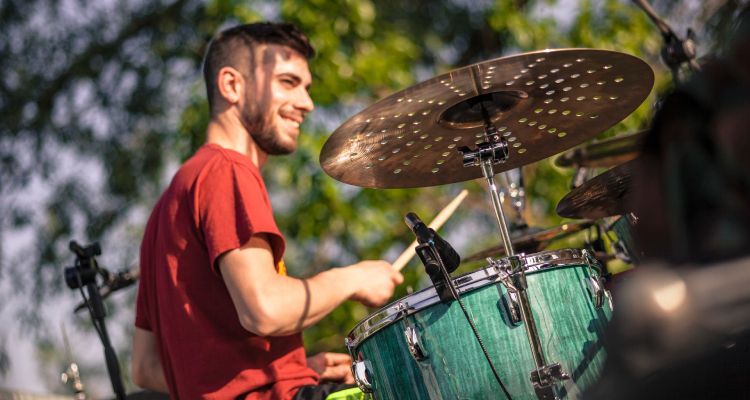
The final types of cymbals to think about are effects cymbals. These come in the form of stack cymbals and auxiliary hi-hats. Similar to splash cymbals, these can be placed anywhere.
Effects cymbals come in all shapes and sizes, so you’ll want to place your effects cymbal somewhere that has enough room for it and that will allow you to play it comfortably.
One of the most popular places that drummers place effects cymbals is to the right of the floor tom. Since a stack doesn’t have much wash, you can place it underneath whatever other cymbal is at that position.
Having the effects cymbal here will make it feel like you have a second hi-hat. It’s incredibly fun to play drums with this kind of setup!

Things to Know When Placing Your Cymbals
Now that you’ve got the positions of your cymbals in the right places, there are a few other things to take note of in your cymbal setup. This includes checking the height and angles of your stands, as well as experimenting a bit further if you want a unique setup.
Height
Choosing the heights of your cymbals is one of the most important decisions you’re going to make as a drummer. When taking ergonomics into account, there are good and bad ways of setting the heights.
If you’ve ever watched drummers from the late 20th-century play, you would have seen how high they all had their cymbals standing. The problem with having your cymbals so high is that you end up putting a lot of stress on your rotator cuffs by lifting your shoulders every time you play them.
It’s a lot more optimal for your body to keep your cymbals sitting below your shoulders when you’re sitting. Having them like this will also require less energy to play the cymbals.
That should just be a starting point, though. Once you’ve set them at this height, play around to see what’s the most comfortable for you.
Angles
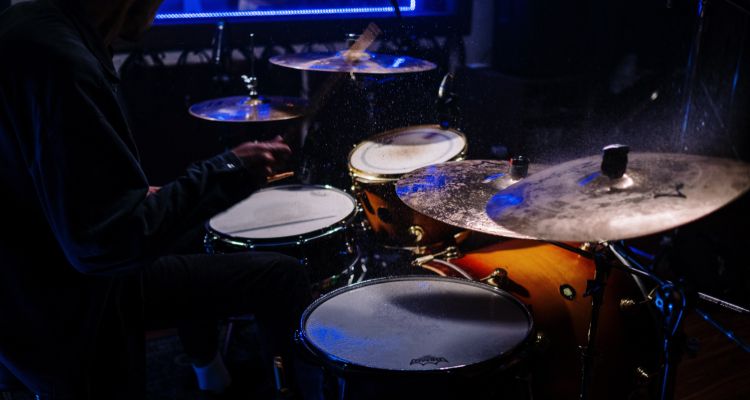
The angle of your cymbals will determine how your sticks strike them when you’re playing. If they’re angled too low, you won’t get a solid impact from the stick. If they’re angled too high, your stick will be hitting the shoulder of the cymbals. That will increase the chance of them cracking.
The best way to position your cymbals is at a flat angle with a slight tilt. You should then strike them by hitting the sticks across instead of straight at them. Using a crossing wash motion will preserve the cymbals for as long as possible.
You may see some drummers like Chris Coleman and Anika Nilles angle their cymbals upward. It’s important to know that the two of them have shifted their cymbal playing technique in a way that doesn’t damage the cymbals when they play them. While it works for them, it’s not the most ideal cymbal placement for most other drummers.
Unusual Setups
The above placements for cymbals aren’t rules that are set in stone. You’ll see many famous drummers playing with wacky and unique setups fairly often. You should use the standard placements as a solid starting point and then experiment from there if you want to change things up.
Some drummers prefer to play with only ride cymbals and no crashes. The drummer from the band, Alt-J, doesn’t use any cymbals at all. At the end of the day, all these drummers started with the standard setup and then altered placements as they developed their own voices.
Final Thoughts
It can take a few years to find what cymbal placements are most comfortable for you. Once you know and are comfortable with the standard setups, you’ll be able to set your drum kit up fairly quickly.
Just don’t be afraid to shift things slightly every now and then to see if you can find a placement that is a bit more comfortable. The goal is always to position your cymbals in a way that makes you play drums the best you can.
These standard cymbal placements are the most common way of getting to that place. So, beginner drummers should all start there.

